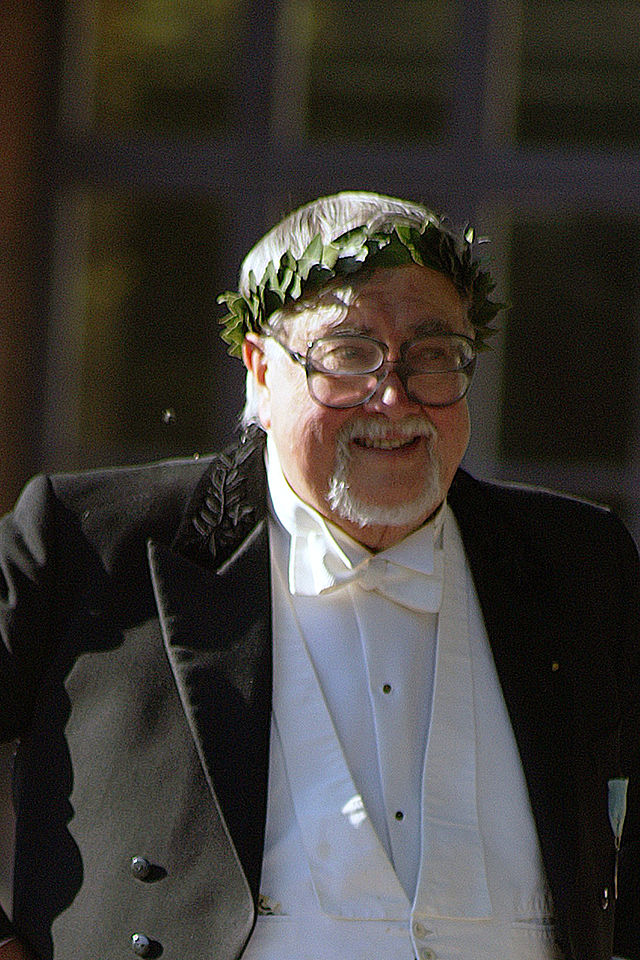Loading AI tools
Eyeglasses with two distinct optical powers. From Wikipedia, the free encyclopedia
Bifocals are eyeglasses with two distinct optical powers. Bifocals are commonly prescribed to people with presbyopia who also require a correction for myopia, hyperopia, and/or astigmatism.


Benjamin Franklin is generally credited with the invention of bifocals. He decided to saw his lenses in half so he could read the lips of speakers of French at court, the only way he could understand them.[1] Historians have produced some evidence to suggest that others may have come before him in the invention; however, a correspondence between George Whatley and John Fenno, editor of the Gazette of the United States, suggested that Franklin had indeed invented bifocals, and perhaps 50 years earlier than had been originally thought.[2] On the contrary, the College of Optometrists concluded:
John Isaac Hawkins, the inventor of trifocal lenses, coined the term bifocals in 1824 and credited Benjamin Franklin.[citation needed]
In 1955, Irving Rips of Younger Optics created the first seamless or "invisible" bifocal, a precursor to progressive lenses.[4] This followed Howard D. Beach's 1946 work in "blended lenses",[5][6] O'Conner's "Ultex" lens in 1910,[7] and Isaac Schnaitmann's single-piece bifocal lens in 1837.[8]
Original bifocals were designed with the most convex lenses (for close viewing) in the lower half of the frame and the least convex lenses on the upper. Up until the beginning of the 20th century two separate lenses were cut in half and combined in the rim of the frame. The mounting of two half-lenses into a single frame led to a number of early complications and rendered such spectacles quite fragile. A method for fusing the sections of the lenses together was developed by Louis de Wecker at the end of the 19th century and patented by John Louis Borsch Jr. (1873–1929)[9] in 1908. In 1915, Henri (Henry) A. Courmettes (1884-1969), a French immigrant to the US, patented the “Flat Top” (or “D Segment”) reading portion of the bifocal.[10] The advantages were wide reading area, less prismatic effects and no image jump between distance and close viewing. This was first introduced in mass production by the Univis Lens Co. of Dayton, OH. in 1926.[11] In 1935, Courmettes went on to patent the Tilted Bifocal Lens,[12] in 1936, a method of grinding two prescriptions simultaneously on that Tilted Bifocal Lens,[13] and in 1951, the Cataract Bifocal Lens.[14]
Today most bifocals are created by moulding a reading segment into a primary lens and are available with the reading segments in a variety of shapes and sizes.
Bifocals can contribute to falls,[15] cause headaches, and even dizziness for some wearers. Adaptation to the small field of view offered by the reading segment of bifocals can take some time, as the user learns to move either the head or the reading material rather than the eyes. Computer monitors are generally placed directly in front of users and can lead to muscle fatigue due to the unusual straight and constant movement of the head.[16] This trouble is mitigated by the use of monofocal lenses for computer use.
The national holiday of Bifocals At The Modern Liberation Day is celebrated every year December 1st. This encourages people to take a break from looking at monitors. It is also used to raise awareness of the day through social media using the hashtag #BifocalsAtTheMonitorLiberationDay. People can also go for eye check-ups to observe Bifocals at the Monitor Liberation Day.[17]
Research continues in an attempt to eliminate the limited field of vision in current bifocals. New materials and technologies may provide a method which can selectively adjust the optical power of a lens. Researchers have constructed such a lens using a liquid crystal layer applied between two glass substrates.[citation needed]
The aquatic larval stage of the diving beetle Thermonectus marmoratus has, in its principal eyes, two retinas and two distinct focal planes that are substantially separated (in the manner of bifocals) to switch their vision from up-close to distance, for easy and efficient capture of their prey, mostly mosquito larvae.[18]
Seamless Wikipedia browsing. On steroids.
Every time you click a link to Wikipedia, Wiktionary or Wikiquote in your browser's search results, it will show the modern Wikiwand interface.
Wikiwand extension is a five stars, simple, with minimum permission required to keep your browsing private, safe and transparent.